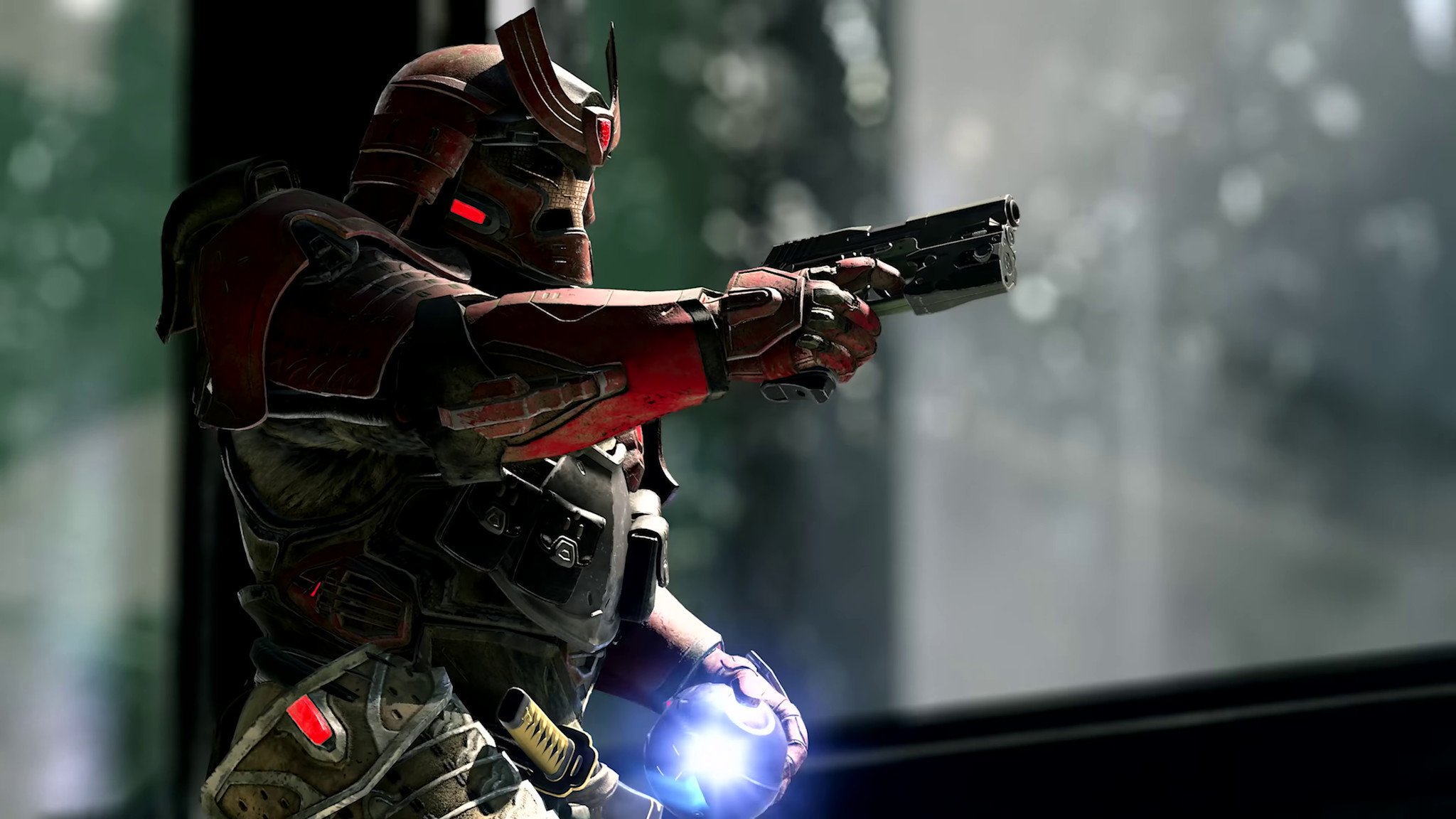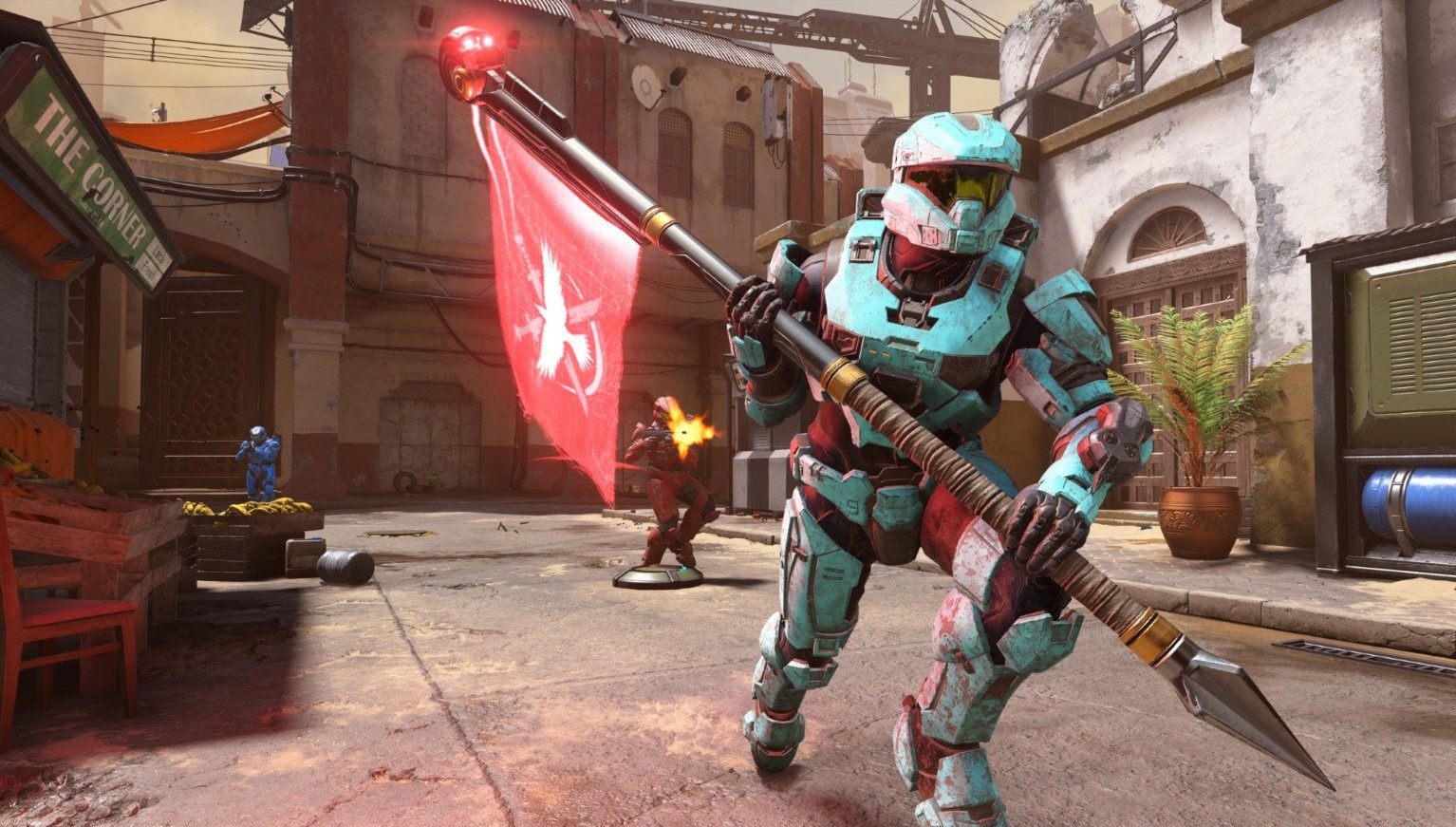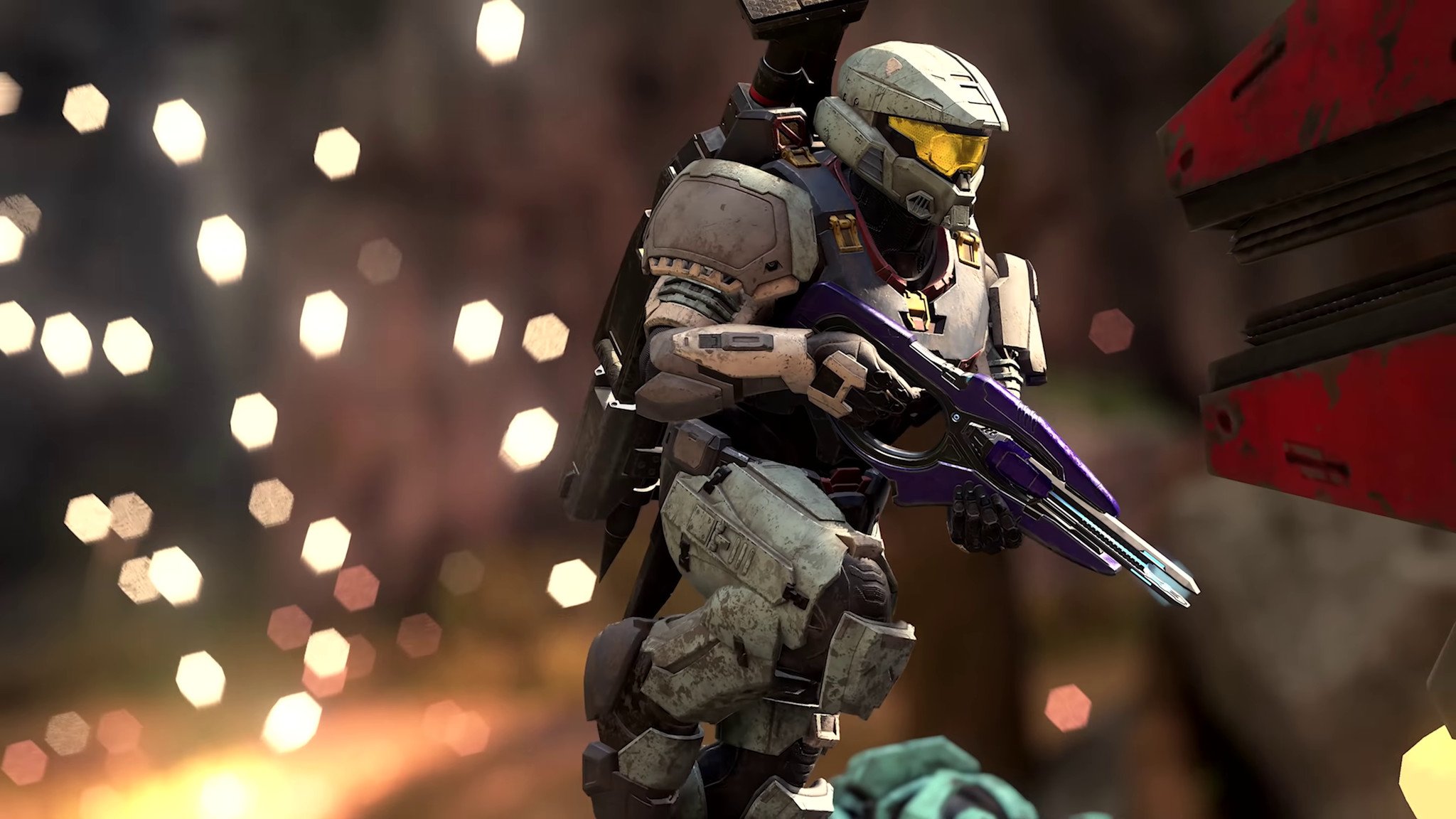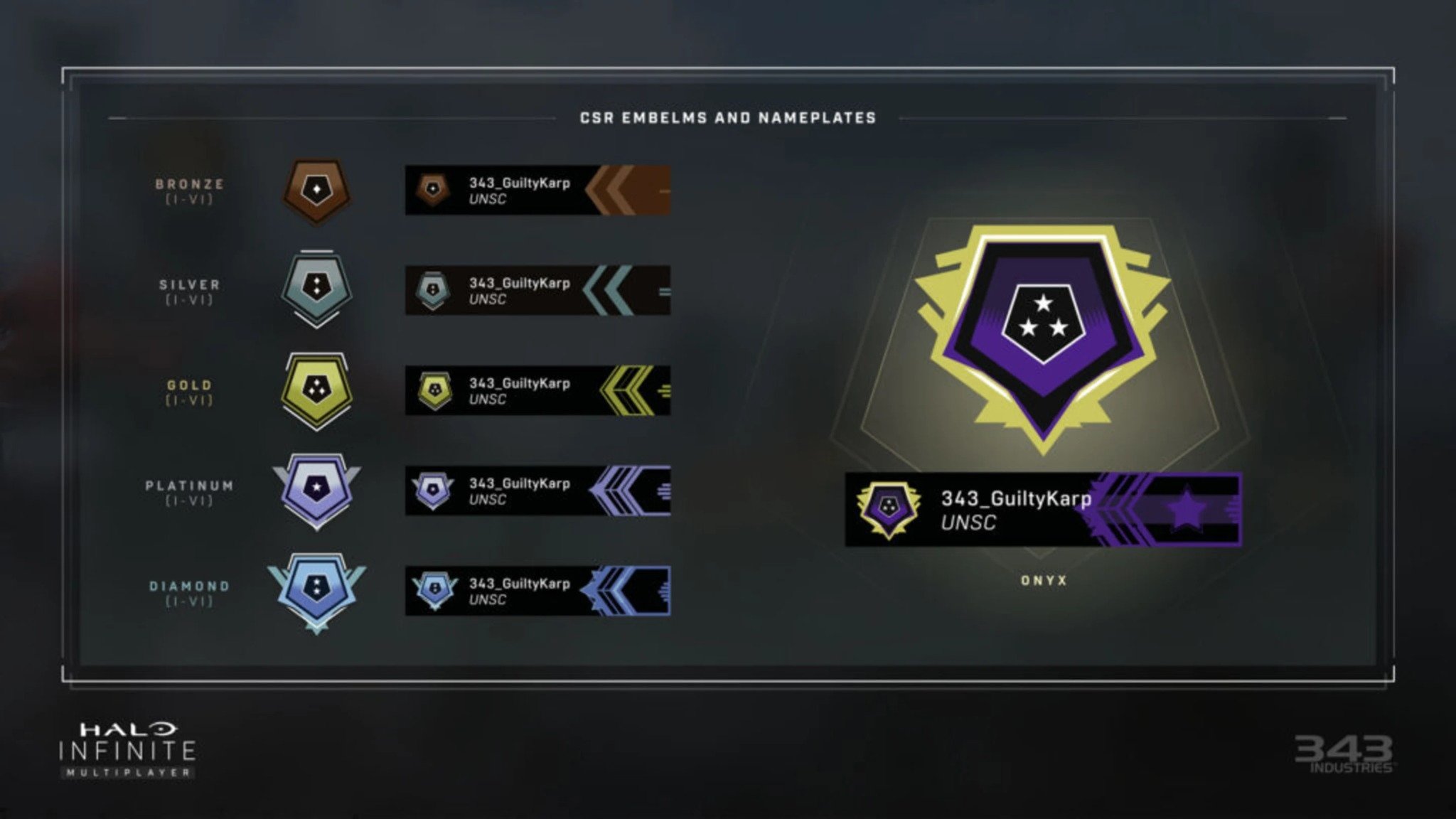How Halo Infinite rank and CSR works
Understand the ins and outs of Halo Infinite's ranking system.

One of biggest draws of Halo Infinite's multiplayer is its Ranked multiplayer playlist, which pits two teams of four against one another in the game's Arena maps. The mode's Battle Rifle starts, removal of radar, and the absence of grenade hit markers all make Ranked the most skill-driven version of Halo Infinite's multiplayer yet, and players that perform well in the playlist will be rewarded with a high rank that proves they're among the best of the best.
But how does Halo Infinite's multiplayer ranking system work? What do terms like CSR or MMR mean, and how will they affect your Ranked experience? Whether you're a newcomer to Halo or a longtime veteran who needs a refresher, we've got you covered with a detailed explanation of everything you need to know about Halo Infinite's ranking system.
How do Halo Infinite ranks work?
In Halo Infinite, you're awarded a tiered rank after you finish 10 placement matches in the Ranked Arena playlist. From there, the game then raises or lowers your Competitive Skill Rank, or CSR, whenever you win or lose a match. CSR is essentially a representation of your progression through Halo Infinite's tiered ranking system, and while 343 Industries hasn't shared how much CSR you need for each rank, you will generally climb ranks by winning lots of matches and will begin moving down the competitive ladder if you lose several games.
While winning or losing is what determines whether you gain or lose CSR after a Ranked match, the TrueSkill 2 skill rating system Halo Infinite uses also uses your individual performance to determine how much CSR you gain or lose. For example, if you get lots of kills and play the objective often in a match, but your team still ends up losing, you won't lose as much CSR as you would have if you played poorly. Conversely, failing to perform well in a match where your team wins will reward you with less CSR than you would have gained if you had a strong performance. In general, playing well consistently is very important for ranking up, as doing so minimizes your CSR losses when you lose and maximizes your gains when you win.
TrueSkill 2 also takes the Match Making Rating (MMR) of all players in the match into account when raising or lowering your CSR. MMR is a hidden stat that's separate from your rank and CSR, and is a measurement of your overall skill. Your MMR constantly fluctuates based on your performance across Halo Infinite's Social and Ranked game modes, and it's what Halo Infinite's Skill-Based Match Making (SBMM) system uses to make sure you're being matched with players who are as skilled as you are.
Ideally, all players in a Ranked match will be of an equal skill level, but in instances where that isn't the case, the amount of CSR gained or lost is adjusted. A team with low-skill players that loses to a high-skill team won't lose much CSR, and their opponents won't gain much, either. If the underdogs manage to defy the odds and score a victory, though, they'll gain a lot of CSR and the high-skill team will also lose a significant amount of CSR.
What changes my MMR in Halo Infinite?
Since MMR has a significant impact on your experience in Ranked matchmaking, it's important to know what raises your MMR and what lowers it. In general, winning and playing well will increase your MMR, while losing and playing poorly will decrease it. However, it's important to note that unlike CSR, your MMR can go up even if your team loses and it can go down even if your team wins, as MMR is primarily governed by your personal performance. Here's a look at everything that increases and decreases your MMR:
All the latest news, reviews, and guides for Windows and Xbox diehards.
Increases MMR:
- Match win
- Getting many kills
- Getting many assists
- Playing the objective
Decreases MMR:
- Match loss
- Dying often
- Avoiding the objective
- Quitting the match
What are Halo Infinite rank resets?
Like many other competitive shooters, Halo Infinite features a rank reset mechanic that resets every player's rank at the start of each new season. This system challenges players to try to keep their rank high as time passes, giving them consistent opportunities to prove their skill.
Right now, it's unclear whether your MMR will be reset alongside your CSR at the start of each new season. If your MMR won't get reset, the game will still take your performances from the previous season into account during matchmaking. If it does get reset, Halo Infinite will ignore your past performances and matchmake you based on your performance in the new season.
Notably, 343 Industries is planning on resetting CSR in the middle of Season 1 since the game's first season lasts until May 2022 (double the length of regular seasons) and because the developers are planning on implementing several major gameplay changes soon. Ranks will then reset again once Season 2 begins.
List of Halo Infinite ranks
There are six Halo Infinite ranks in total, and five of them each have six different tiers to progress through. This means that in total, there are 31 different tiered ranks that players can reach. Here's the complete list of all of them, from lowest to highest:
- Bronze I to VI
- Silver I to VI
- Gold I to VI
- Platinum I to VI
- Diamond I to VI
- Onyx
Note that Onyx does not have any tiers, and is considered the pinnacle rank in Halo Infinite's Ranked multiplayer. You can still fall back down into the Diamond ranks if you lose matches at the Onyx level, however.
Halo Infinite's multiplayer is free to play and is available on Xbox Series X, Xbox Series S, Xbox One, and Windows PCs. It's a ton of fun, and paired with the Halo Infinite campaign, it's easily one of the best Xbox games available right now.

Brendan Lowry is a Windows Central writer and Oakland University graduate with a burning passion for video games, of which he's been an avid fan since childhood. He's been writing for Team WC since the summer of 2017, and you'll find him doing news, editorials, reviews, and general coverage on everything gaming, Xbox, and Windows PC. His favorite game of all time is probably NieR: Automata, though Elden Ring, Fallout: New Vegas, and Team Fortress 2 are in the running, too. When he's not writing or gaming, there's a good chance he's either watching an interesting new movie or TV show or actually going outside for once. Follow him on X (Twitter).





